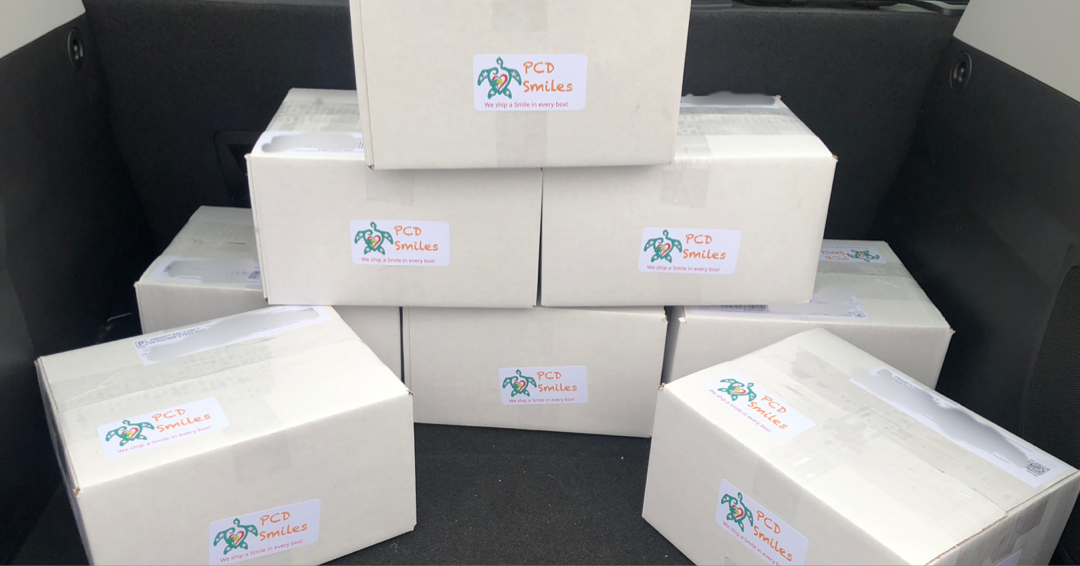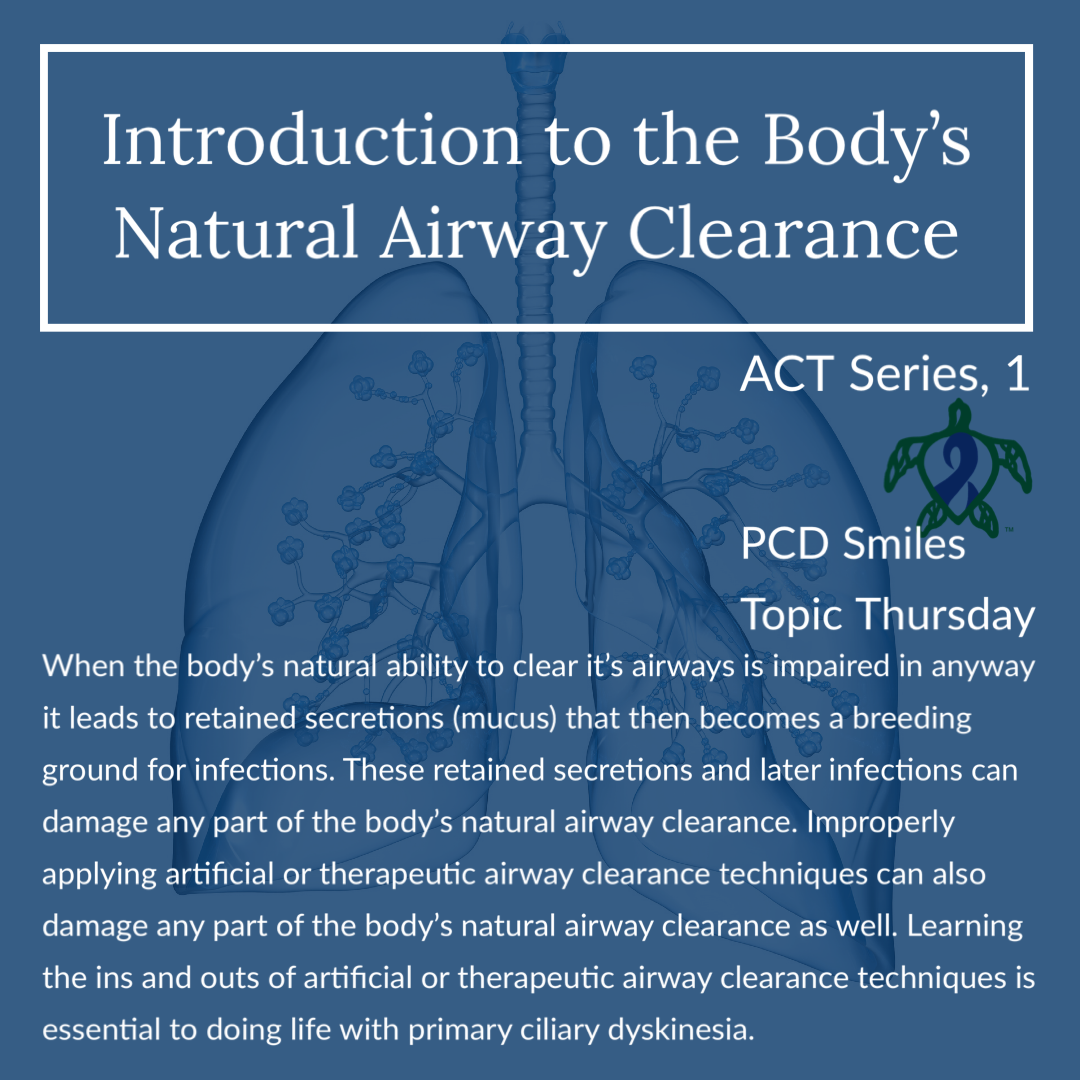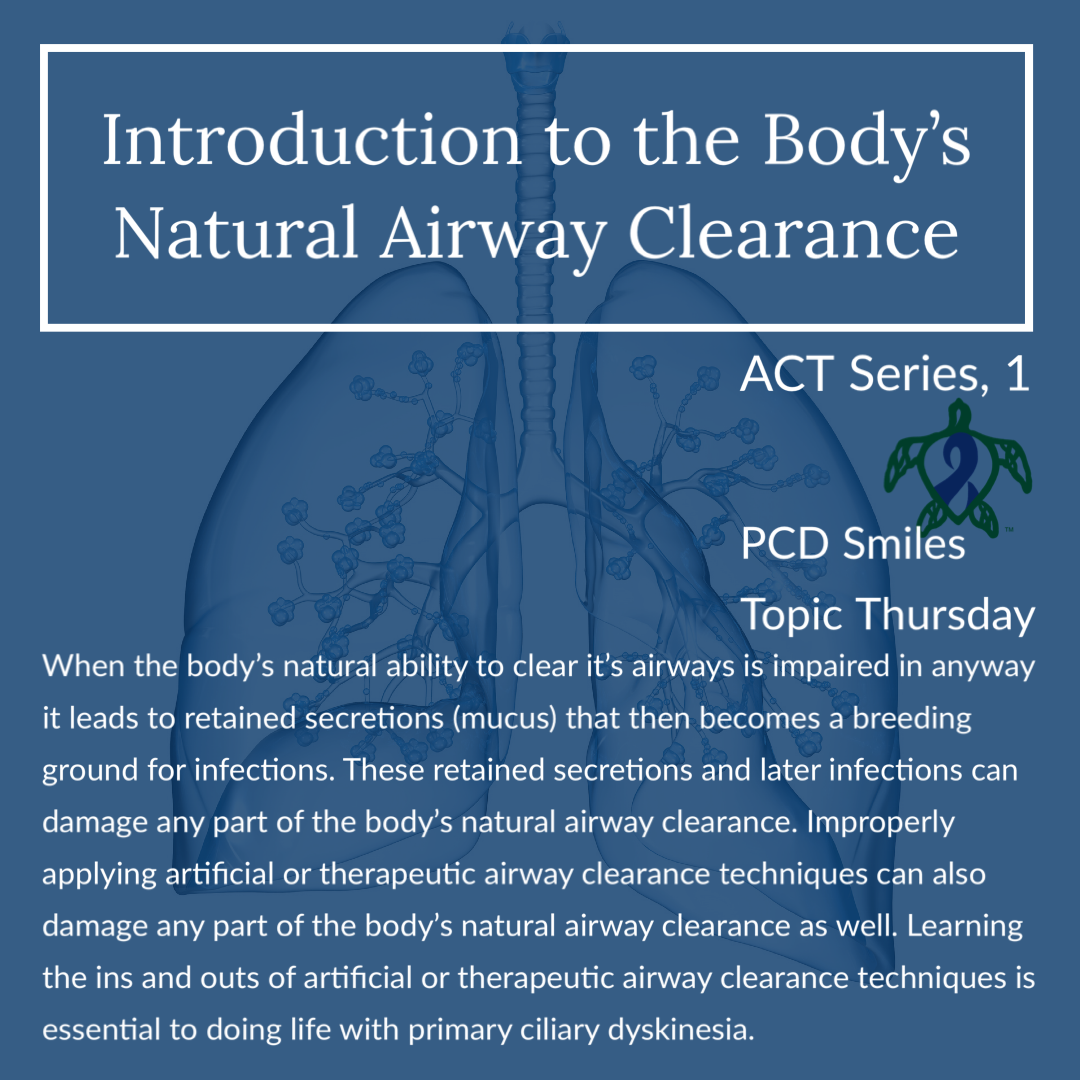Over the next few weeks we will take a deep dive into airway clearance. Although evidence whether airway clearance therapy is effective or even which type of airway clearance therapy is effective for patients with primary ciliary dyskinesia (PCD) is lacking. The over all consensus is that the body’s natural airway clearance is impaired in patients with PCD. In, “ACT Series, 1; Introduction to the Body’s Natural Airway Clearance” we will be discussing the body’s natural airway clearance so that we can better understand how to apply airway clearance techniques and which ones might be beneficial to the patient’s unique set of circumstances and their overall health picture.
In order for the body’s natural airway clearance to function properly it must have a properly functioning unobstructed airway complete with normal airway structures. It must have a properly functioning mucociliary escalator complete with normal ciliary function and proper fluid transport between cell membranes. And finally all parts of the body’s natural cough must be effective. With these things all in their properly functioning state the body’s natural airway clearance can clear particles, debris, and bacteria that are breathed into the airway in as little as twenty four hours.
Let’s first look at the properly functioning unobstructed airway complete with normal airway structures. The airways are kept open by normal structural supports like the airway walls. And other mechanisms like the coordinated reflexes of the cough reflexes and the swallow reflexes. The larynx, the vocal folds, and aryepiglottic folds all help to prevent stuff from entering the lower airways. The pharynx is considered a common space for air travel for breathing and also the travel of food and liquids for nutrition. The pharynx is an active participant in protecting the airways. Any defect, damage, or disease to any any part of these structures or coordination of reflexes can impact and impair the body’s ability to naturally clear the airways.
Next let us look at the body’s mucociliary escalator. It helps if you think of the mucociliary escalator as an escalator in a department store. The mucociliary escalator is used to transport particles, debris, and bacteria up and out of the larger airways into the trachea and larynx where they can be swallowed or coughed out. The mucociliary escalator starts in the goblet cells, submucosal glands, Clara cells, and tissue fluid transudation; with the main source being the goblet cells and submucosal glands. The mucus layer rides like a bed on top of the cilia and traps the particles, debris, and bacteria. The cilia move in a coordinated beat causing in the mucus bed to flow up and out of the larger airways towards the trachea and larynx for expectorating. Any defect, damage, or disease to any any part of the mucociliary escalator can impact and impair the body’s ability to naturally clear the airways. It’s important to note that the mucociliary escalator is not in any part of the alveoli area or rather gas exchange area of the small airways in the body.
And lastly, although considered a backup airway clearance mechanism, the cough is an important part of the body’s ability to naturally clear the airways. The cough consists of four parts; irritation, inspiration, compression, and expulsion. Each part is essential to the body's cough clearance to move the particle, debris, and bacteria filled mucus out of the larger airways. The irritation phase is a stimulant phase which can be chemical, inflammatory, mechanical, or thermal stimuli. During inspiration phase the stimulation then causes the body’s respiratory muscles to take a deep inhalation. During the compression phase the reflex nerve impulses cause the glottis to close and forceful contractions of the expiratory respiratory muscles causing a rapid increase in alveolar and plural pressures. And lastly during the expulsion phase the build up of pressure causes the glottis to open as the respiratory compression continues and the difference in airway pressure and the atmospheric pressures causes a violent expulsion flow of air from the airways. This mechanism causes a huge force of airflow that shears the mucus from the airway walls that moves the mucus into the airflow expelling the mucus into the trachea and larynx where it can be swallowed or expelled out of the body. It is important to note that coughing alone is not enough to clear the areas of the smaller airways responsible for gas exchange of obstructions like particles, debris, bacteria, and even mucus. To clear obstructed small airways more aggressive airways clearance techniques beyond the body’s natural airway clearance are required.
When the body’s natural ability to clear it's airways is impaired in anyway it leads to retained secretions (mucus) that then becomes a breeding ground for infections. These retained secretions and later infections can damage any part of the body’s natural airway clearance. Improperly applying artificial or therapeutic airway clearance techniques can also damage any part of the body’s natural airway clearance as well. Learning the ins and outs of artificial or therapeutic airway clearance techniques is essential to doing life with primary ciliary dyskinesia. We hope that you join us next week for part two of our series on airway clearance techniques.
Be sure to join us next week for another Topic Thursday.
Join our Facebook group Turtle Talk Café today, click here.
We have several ways that you can donate to PCD Smiles;
- Visit Smile E. Turtle's Amazon Wishlist
- For more information on how you can donate, please visit our "Donation" page to check out our "Do & Don't policies.
- Or sponsor a PCD Smiles cheer package today!
- To shop for your “Official” turtle care ribbon gear today, visit PCD Style or Smile E. Cove
Thank you for your consideration!
***Please speak to your respiratory therapist or your PCD medical team before commencing any new treatment. DO NOT start using a device, or technique, on this website if you have not discussed this with your PCD team first.***














